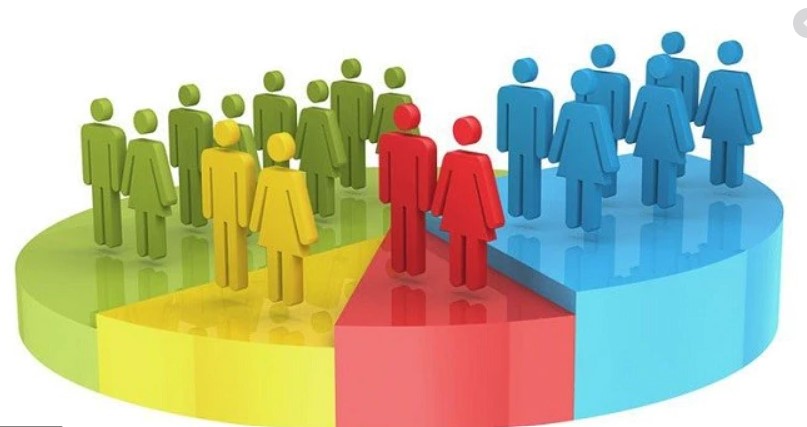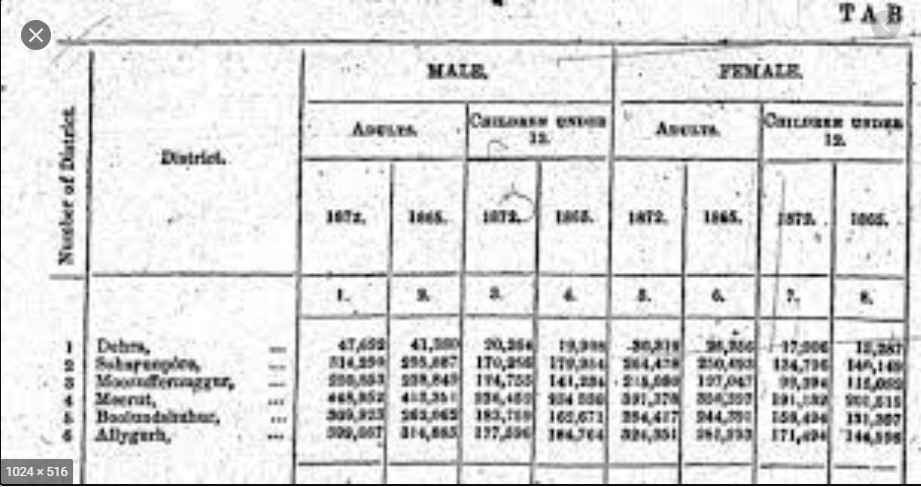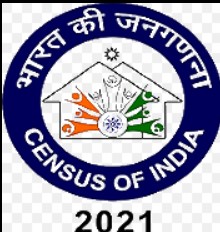
India has a long and vivid history of maintaining a record of the population that dates back to the ancient period. The Rig Veda reveals that a certain kind of population count was maintained during c. 800-600 BC in the Indian subcontinent. The well-known Arthashastra by Kautilya composed in c.3rd century BC prescribed the compilation of population statistics as a measure of state policy for taxation. It comprised a comprehensive description of the techniques of conducting population, economic and agricultural censuses. During the administration of the Mughal emperor Akbar, the Ain-e-Akbari incorporated extensive data about population, industry, wealth and many other indices.
The first complete census in India transpired during British rule and was conducted in 1830 by Henry Walter in Dacca (now Dhaka). During this census, the statistics of the population with sex, broad age group, and the houses with their amenities were collected. The second census was conducted in 1836-37 by the Fort St. George administration.
A systematic and modern population census, in its present form, was first conducted non-synchronously between 1865 and 1872 in different parts of the country. The enumeration of caste was for the first time introduced in the census of the North-Western Provinces in 1865. However, they encountered several problems while incorporating caste as a factor of enumeration. First, an entity to be counted had to be definite with no overlapping boundaries. For instance, people who were to be enumerated as Hindus must first be defined as such, and separated from the Sikhs or the Buddhists. Classification, on the other hand, referred to the practice of sorting and arranging the data in different columns and rows to be presented in a tabular form. The first step relevant in this regard was to formulate the classificatory principles. The principles were derived from the defining attributes of the entity to be classified. For instance, if caste was recognised as an occupational division, then different types of occupation would be used to name the columns or rows in a table within which the numerous castes enlisted during a survey would be placed. According to W.C. Plowden, there was no grand design of knowing and controlling the population as generally attributed to the colonial state that inspired the inclusion of caste in the census of the NWP. The objectives were rather limited: caste was expected to identify the communities and “facilitate classification of the population into agricultural and non-agricultural groups.” In addition, information about certain castes was also supposed to help in checking customs like infanticide prevailing amongst them.

The introduction of caste in census was accompanied with serious problems of identification and classification. The enumerators discovered during the surveys that society was not patterned according to the fourfold varna division comprising brahmin, kshatriya, vaishya and shudra. Instead in their localities they encountered numerous jatis – communities with unfamiliar names, uneven status and varied characteristics.
These jatis have never been homogeneous though our caste-conditioned minds have failed to appreciate the significance of the situation or even take this into account in the first place. Nonetheless, the census officials were now faced with a serious challenge: which of those diverse jatis enlisted in the census schedules were castes, and how were these to be classified in view of the fact that the varna framework was not considered relevant anymore?
The diverse identity of the jatis precluded the possibility of cataloguing these according to any uniform classificatory principle. The caste table in the report on the census of the NWP, 1865, had several columns within which all the jatis were placed: first there were four columns headed by brahmin, kshatriya, vaishya, shudra, then came the five columns named after the Sikh and four sections of the Jains, following which came the 14 columns of “religious sects”, three columns of “travellers”, and finally one of those “Hindus whose caste is not known”. Being the first such survey where caste was included, the officials supervising the census of the NWP, 1865, could not exclude the varna division from the classificatory table. At the same time, the presence of additional columns named after “religious sects”, “travellers”, etc, implies that the jurisdiction of the text-based order was already being compromised.

source : dehrahistory.wordpress
This effort culminating in 1872 has been regarded as the first population census of India. However, the first synchronous census was taken under British rule on February 17, 1881, by Plowden, the Census Commissioner of India. Since then, censuses have been initiated uninterruptedly once every ten years. The creation of the Census was driven primarily by the British emphasis on administration, rather than a genuine desire to uncover the characteristics of India’s population. In fact, the first census in 1872 was partially a reaction to the 1857 Rebellion. The rebellion had posed a serious challenge to British rule, so the Raj prioritized administration and governance as a means to ensure stability after 1857. The main emphasis in this census was not only laid on complete coverage but also the classification of demographic, economic and social characteristics taken in the entire subcontinent of British India (except Kashmir). The census was a serialised pan-Indian project. The data that was collected was put to comparison across the provinces. The fulfilment of this very basic exercise hinged on consistency in the use of the classificatory models. Uniformity in the criteria of identification and classification of communities thus was essential for a proper conduct of enumeration. These features of the census were instrumental in producing monolithic communities like the ‘Hindus’ which subsumed these diverse communities and jatis, and it is unfortunate that such ambiguities still exist.
The first census of independent India was conducted in 1951, which was the seventh census in its continuous series. The enumeration period of this Census was from the 9th to the 28th of February 1951. A three day revisional round from 1st to 3rd March was undertaken to update the data as on sunrise of 1st March, which was the reference date. An Individual Slip was canvassed which contained 13 questions. The particulars like name, relationship, birthplace, sex, age, economic status, principal and subsidiary means of livelihood were obtained for each individual, as was information on religion, mother tongue, literacy. Out of 13 questions, 12 questions with its sub-parts were common for all states while 1 question with sub-parts relating to fertility, unemployment, infirmity, size of the family was optional for certain states. In the census of 1951, the entire Jammu and Kashmir was excluded from the census and its population was estimated on the basis of past census figures.

Source- Rediff.com
The census of India, conducted in 2001 was the fourteenth census in the continuous series as reckoned from 1872 and the sixth since independence. The gigantic task of census taking was completed in two phases. In the first phase, known as Houselisting Operations, all buildings and structures, residential, partly residential or non-residential were identified and listed and the uses to which they were put were recorded. Information on houses, household amenities and assets were also collected. In the second phase, known as ‘population enumeration’, more detailed information on each individual residing in the country, Indian national or otherwise, during the enumeration period was collected. In the census of 2001, more than 2 million enumerators were stationed to accumulate the information by visiting every household.
The Indian census is one of the most extensive administrative exercises undertaken in the world. The 2011 census was conducted in two phases -the first phase was conducted between April and September 2010 across the country depending on the convenience of different states and union territories. The second phase began all over the country from February 9, 2011, and continued up to February 28, 2011. The census organisation implemented the ‘Census in School’ programme across the country. It was specifically designed for the active participation of children in ensuring the authenticity of census data of their families. The programme covered about 60 to 80 schools in each of the 640 districts in the country. What makes the Census of India 2011 different from the 14 other decennial censuses administered since 1881 is the synchronous preparation of a National Population Register that would recognise the usual residents of the country, so that it can be employed as a comprehensive identity database to further reach the political objectives of augmented targeting of social welfare schemes, and also for purposes of ensuring internal security.
Even though the census is a demographic activity in India, it has been influenced by political developments and has in turn, profoundly affected national and state politics. The first such effort in 1861 was delayed due to the disturbances caused by the great rebellion of 1857-59. Later, the 1921 and 1931 censuses were influenced by the Non-Cooperation Movement and infrequent political unrest during the period that diminished data collection to some extent. Similarly, the 1941 census processes were hit by World War II. In independent India, too, political disturbances led to the exclusion of Assam from the 1981 census and Jammu and Kashmir from the 1991 census.
In turn, the censuses have also executed an even greater role in shaping politics. For instance, census numbers played a critical role in two great partitions; first, in the Bengal partition, the 1872 census identified the large Muslim population in the state, and then that of India in 1947. Similarly, census data played a conspicuous role in the linguistic reorganisation of Indian states in 1956 and also in the more recent ones like Chhattisgarh, Jharkhand and Uttaranchal. Census data also determines the political representation; according to Article 81 of the Constitution, states which controlled population effectively faced the prospect of getting their number of seats reduced and states which took lead in higher population figures stood a chance to increase their number of seats in Lok Sabha. To allay this apprehension the number of elected representatives in the Lok Sabha and State Legislatures were apportioned based on the population estimated in the 1971 census so that the states that have curtailed population growth are not disadvantaged until the relevant figures for the first Census taken after the year 2000 have been published. Section 3 of the Constitution (Eighty-fourth Amendment), Act 2001, extended the deadline from 2000 to 2026. However, basing the 1971 Census figure of 54.81 crore to represent today’s population presents a distorted version of our democratic polity and is contrary to what is mandated under Article 81 of the Constitution. So when the first Census figure will be available after 2026, that is, in 2031, a fresh delimitation will have to be done which will dramatically alter the present arrangement of seat allocation to the states in the Lok Sabha.
Apart from politics, the census has also played a notable part in distinguishing social and economic trends for almost a century and a half. For instance, the first census in 1872 highlighted how low literacy and social attitudes restricted the capacity to recall age, as most people preferred to round up the number either to 0 or to 5. As much as 56% of the reported ages in the 1901 census ended in 0, 2 or 5. In 1871-72 census, the widespread prevalence of female infanticide and the profoundly skewed sex ratio, especially in the north and west of India was revealed. To understand the vast changes in Indian consumption patterns, we need only to take a glimpse into the census volumes. Highlighting the prudent assets and lifestyles in some Indian households, the 1881 census denoted that as for furniture, the Hindus were likely to possess none. They possessed no chairs and tables and chests, nor any of the other things that were seen in the houses of the Europeans. The only things they did possess were boxes or round baskets with covers and locks to keep their clothes and jewels. Even the wealthy Hindus, who owned hundreds of thousands of assets and a high amount of wealth, had no more than this.
The 2001 census shows how asset ownership has transformed over 130-odd years. While the bicycle was the most popular asset owned by about 43% of Indian households in 2001, the second important durable asset was the radio available in 35.1% of the houses. Next was a television set, which was seen in 31.6% of the households, followed by scooters, motorcycles and mopeds (11.5%), telephones (9.1%) and cars, jeeps and vans (2.5%). This census also indicated for the first time that only about a third of the households could avail banking services.
The 2011 census has shed greater light on the changes that have taken place in the decade of rapid growth that is the 2000s. It attempted to estimate the population based on socio-economic and caste status for the first time since 1931. However, as the enumeration was based on recording the respondents’ declaration, it led to the creation of hundreds of thousands of caste and sub-caste categories.

source : wikipedia.
The 16th Indian census will be taken in 2021 and the government is instead considering enumeration of OBCs as notified by each state. However, due to the ongoing pandemic,the 2021 national census of India will be held digitally, which was confirmed by Finance Minister Nirmala Sitharaman during her Union Budget speech in February 2021. Touching upon the topic, Sitharaman confirmed that this census of India would become the very first one in the history of India to be held digitally, marking India’s transit towards digitising government and public services.
It may be seen from the history of Indian census that the changes that have occurred from one census to another depend upon the need of the time, demand of the data users whether for the benefit of the people or not. The Indian census is well recognized for the data it reveals. Problems relating to political, social and cultural reasons also makes it quite challenging. In spite of all these difficulties, the census in India has been conducted since 1871 uninterruptedly.



Aku menyukai banget artikelnya pada tulisan ini. Terima beri telah berbagi berita yang amat penting. Aku tunggu verbal-artikel berikutnya.